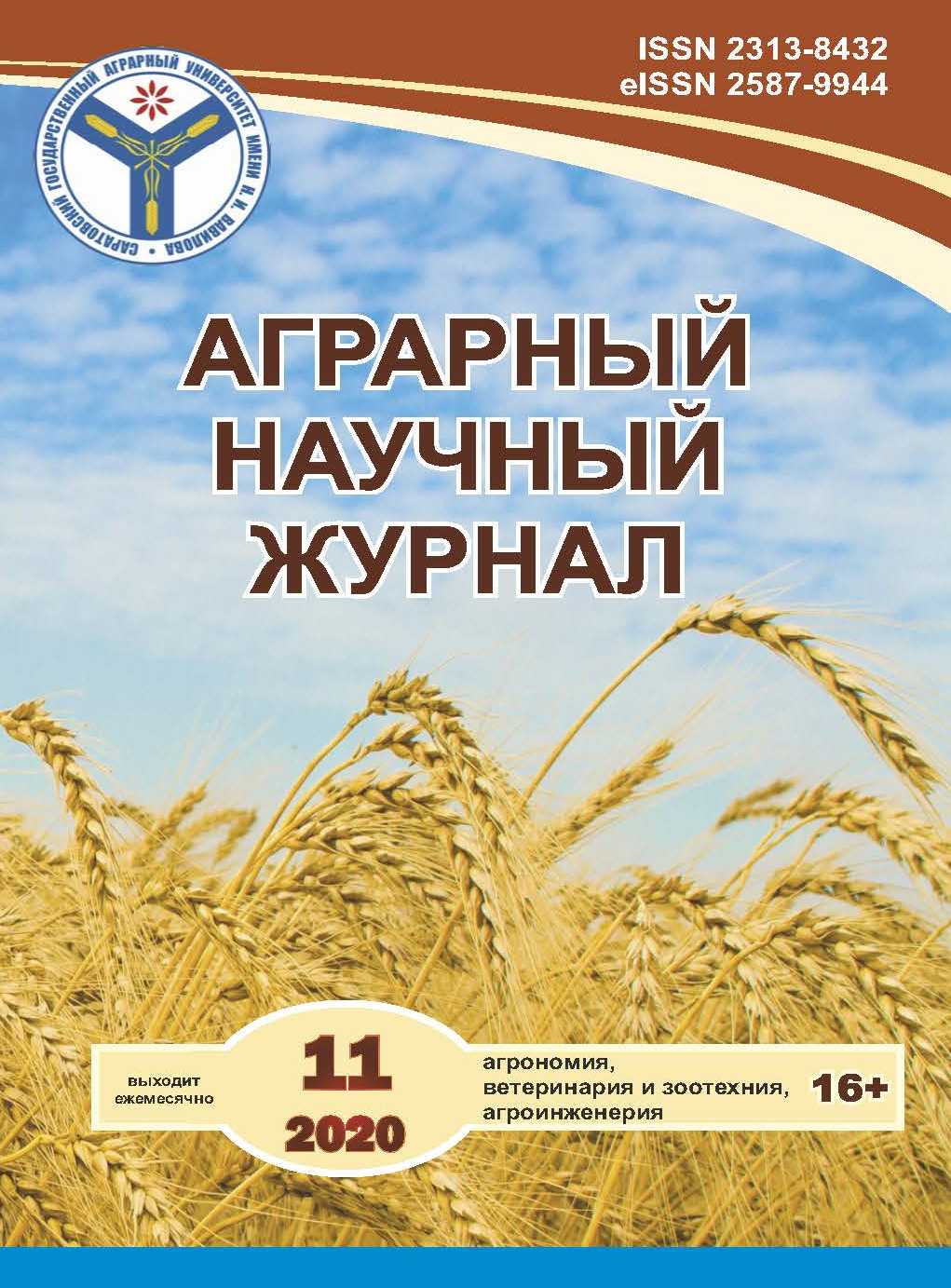Influence of main tillage methods on barley yield in the Lower Volga region
DOI:
https://doi.org/10.28983/asj.y2020i11pp43-47Keywords:
methods of basic treatment of soil, working body, spring barley, weed infestation, yieldAbstract
Light-chestnut soils of the arid zone of the North of the Astrakhan region, even if all the standards of agricultural engineering are observed, are characterized by unfavorable agrochemical and water-physical properties for most crops. To successfully solve the problems associated with increasing adaptation of zonal agriculture to harsh climate conditions, it is necessary to search for new resource-saving technologies. The purpose of the work is to identify the impact of resource-saving methods of basic soil cultivation on the yield of spring barley in the semi-desert conditions of the North of the Astrakhan region.
The organization of field experiments, observations and laboratory analyses were carried out according to the method of conducting field experiments Dospekhov B. A. and Guidelines for conducting field experiments with forage crops (research Institute of feed). The results of the conducted field experiments and laboratory studies give reason to speak about the feasibility of using a resource-saving soil-cultivating organ ROPA in the zone of unstable moisture in the North of the Astrakhan region. Loosening this unit contributes to an increase of 25% of the total spring stock of soil moisture. The introduction of this deep tillage (H=0.40-0.45 m) and tools for its implementation (ROPA) allows you to get in the rain-fed conditions of the arid zone of the North of the Astrakhan region from one hectare of arable land to 1.24 tons of barley Vakula and 1.30 tons of barley Ratnik.
Downloads
References
Ачканов А.Я., Василько В.П. Ландшафтно-экологическое земледелие юга России. – Краснодар, 2006. – 111 с.
Беленков А.И., Умар Сабо, Кунафин Р.И. Основная обработка почвы: сравнительная оценка в современных системах земледелия // Нивы России. –2016. – №11 (144). – С. 68–69.
Доспехов Б.А. Методика полевого опыта с основами статистической обработки результатов исследований. – 5 изд., перераб. и доп. – М.: Агропромиздат, 1985. – 351 с.
Захаров Н.Г., Полняков М.А. Влияние основной обработки почвы на засоренность посевов яровой пшеницы // Современные системы земледелия: опыт, проблемы, перспективы: материалы Междунар. науч.-практ. конф., посвященной 80-летию со дня рождения профессора Морозова В.И. / Ульяновская ГСХА. – Ульяновск, 2011. – С. 98–102.
Инновационные способы обработки почв при возделывании ячменя / Ю.Н. Плескачёв [и др.] // Плодородие. – 2012. – № 6. – С.18.
Казаков Г.И., Авраменко Р.В., Марковский А.А. Земледелие в Среднем Поволжье. – М.: Колос, 2008. – 308 с.
Кирюшин В.И. Проблема минимизации обработки почвы: перспективы развития и задачи исследований // Земледелие. – 2013. – №7. – С. 3–6.
Методические указания по проведению полевых опытов с кормовыми культурами / ВНИИ кормов. – М., 1983. – 197 с.
Почвозащитные технологии и современные мало затратные технологические приемы возделывания сельскохозяйственных культур: Рекомендации /ФГНЦ Росинформагротекс. – М., 2001.–28 с.
Технология минимизации основной обработки почвы / И.Б. Борисенко [и др.] // Вестник РУДН. – 2018. – №1. – С. 35–42.
Чурзин В.Н., Асирифи Амрако О. Водопотребление и его составляющие в посевах ярового ячменя в зависимости от предшественников и способов основной обработки почвы // Известия Нижневолжского агроуниверситетского комплекса. – 2013. – №1 (29). –С. 61–64.
Downloads
Published
Issue
Section
License
Copyright (c) 2020 The Agrarian Scientific Journal

This work is licensed under a Creative Commons Attribution-NonCommercial 4.0 International License.








